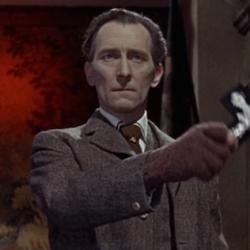In his book, The Culture of Time and Space, 1880-1918, Stephen Kern explores how technological innovations of the late 19th and early 20th centuries (“telephone, wireless telegraph, x-ray, cinema, bicycle, automobile, and airplane,” 1) reoriented the experience of time and space. Simultaneous communication seemed to erase space, and rapid transport seemed to diminish time. Kern extends the argument to culture, and sees a complex feedback loop between technological and cultural factors. He also extends the argument to social and political concerns that are not normally viewed in terms of time and space:
“class conflict is viewed as a function of social distance, assembly lines are interpreted in conjunction with Taylorism and time management studies, the diplomatic crisis of July 1914 is seen to have a historically unique temporality, and World War I can be interpreted under a Cubist metaphor. The phonograph and cinema are evaluated in terms of the way they modified the sense of the past, the telephone and World Standard Time are seen restructuring the experience of the present, the steamship and the Schlieffen Plan reflect a desire to control the future, urbanism is viewed as a process of diminishing living space, the politics of imperialism is seen as a universal impulse to claim more space, wealth is conceived as the power to control time and space” (4).
Diplomacy and politics are a surprising addition to that list, but Kern makes the point plausible: “the contrast between Austria-Hungary, convinced its time was running out, and Russia, which felt it had time to spare, is striking and is revealed repeatedly in diplomatic documents. The experience of space also varies considerably along national lines: some countries, like German, believed they needed more; Austria-Hungary thought it space was excessively heterogeneous and disintegrating; and Russia was universally viewed (and feared) as the country with boundless space” (4).
Throughout the book, Kern shows how cinema both reflected and contributed to these new experiences of space and time. Phonographic montages had been used for decades, but Georges Melies was the first to introduce it into film. Contrast editing – quick-cutting from one scene to another – became popular with DW Griffith’s films. Kern writes, “While many early cinema viewers complained that the stories were technically ‘jerky,’ they soon adapted their visual response and learned to sustain continuity between lapsed sequences and integrate them into a powerful climax as all converged in a single dramatic moment” (70-71).
Close-ups created an unparalleled sense of intimacy: “In 1916 Hugo Munsterberg interpreted the close-up as a device of the cinema to recreate the way the mind selects important objects and fixes on them. If a camera points out that a locket is hung on the neck of a stolen child, it is not necessary to tell the audience that everything will hinge on it when the girl grows up. The close-up increase the size and significance of certain objects, made the audience feel closer to them, and gave film makers one more technique to render the varying lived distances of experience” (219). The sheer fact that the camera can move in and out offered new ways to think about consciousness.
Cinema also disrupted the spacing of traditional society: “The new cinema was a uniquely democratic art form. While the theater was relatively inexpensive and could not reproduce itself, the technology of the cinema filled hundreds of movie houses with the same big picture for vast working class audiences. Compared to the theater, the cinema was not only far more accessible but, more importantly, enabled all viewers to see anywhere that a camera could see. Metaphors reach across hierarchies and link unequals. The powerful metaphorical technic of cinema dramatized the inequalities of old hierarchies and the waste of obsolete conventions.” As a 1913 piece in the Nation put it, the movies were open to “all nations, all ages, all classes, both sexes” (208).














